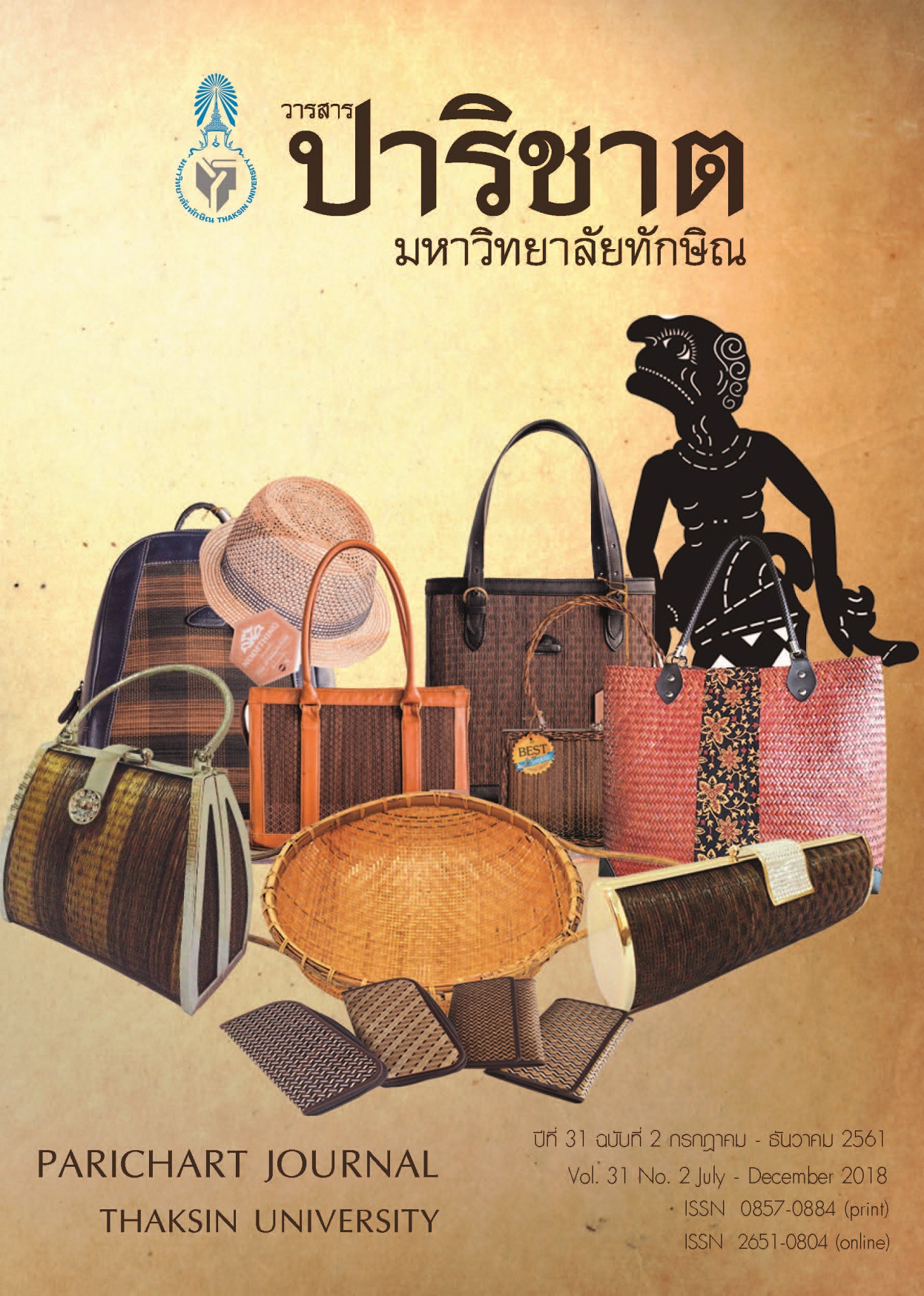Niras Sita: Plaintive Customs of the Theories Sanskrit Literature
Main Article Content
Abstract
This article aims to study about the Plaintive Customs of the theories
Sanskrit literature of Niras Sita which is part of Niras Khamchan, the literature
in The Ayathaya period. The previous study found the content of Niras
Sita to be part of the Ramayana which has been influenced from The
Indian Tale of Rama. The Ramayana in Thailand derived from India directly
and from other Kingdoms in the vicinity of Thailand prior to the
establishment of the Kingdom. Nirat Sita was not very well-known at that
time. Nirat Sita used similar language with Kab Mahajataka which is the
literature in the period of King Songdhama era. It was assumed Nirat Sita
was written before Jindamanee. The content of Nirat Sita mentions the
separate of Rama from Sita. This study shows the Plaintive Customs of
the theoretical Sanskrit literature Theories of Niras Sita in 7 steps; Abhilasa, Cintā, Samaruti, Gunakathana, Udvaga, vayādhi and Jadhatā. but 3 steps
have not been; Samapralapa, Unmāda and Marueti.
Article Details
References
กรุงเทพฯ: บี.เจ.เพลท โปรเซสเซอร์.
[2] เกษม ขนาบแก้ว. (2539). อิทธิพลของวรรณคดีต่างประเทศต่อวรรณคดีไทย.
กรุงเทพฯ: โอ.เอส. พริ้นติ้ง เฮ้าส์.
[3] ชลดา เรืองรักษ์ลิขิต. (2548). “วรรณคดีเรื่องอนิรุทธ์” : มรดกตกทอดในวรรณคดีภาคกลาง และในวรรณคดีท้องถิ่น”, ใน ภาษา – จารึก 10. หน้า 15-64. กรุงเทพฯ: มหาจุฬาลงกรณราชวิทยาลัย.
[4] เอกพงศ์ ประสงค์เงิน. (2545). เอกสารประกอบการสอนวิชา 208261 วิวัฒนาการวรรณคดีไทย. ชลบุรี: คณะมนุษยศาสตร์และสังคมศาสตร์ มหาวิทยาลัยบูรพา.
[5] กรมศิลปากร. (2530). วรรณกรรมสมัยอยุธยา เล่ม 2. กรุงเทพฯ: บริษัท อมรินทร์พริ้นติ้งกรุ๊พ จำกัด.
[6] กุสุมา รักษมณี. (2549). การวิเคราะห์วรรณคดีไทยตามทฤษฎีวรรณคดีสันสกฤต (พิมพ์ครั้งที่ 2). กรุงเทพฯ: บริษัท ธรรมสาร จำกัด.
[7] มณีปิ่น พรหมสุทธิรักษ์. (2548). “ทวาทศมาศ : นิราศหรือตำราการประพันธ์”, ในภาษา – จารึก 10. (หน้า 79-96). กรุงเทพฯ: มหาจุฬาลงกรณราชวิทยาลัย.
[8] Hudak, T. J. (1988). “The Kamadasa In classical Thai Poetry. In Manas chitakasem (Ed.)”, Thai Literary Traditions. 158-169. Bangkok: Chulalongkorn University.


